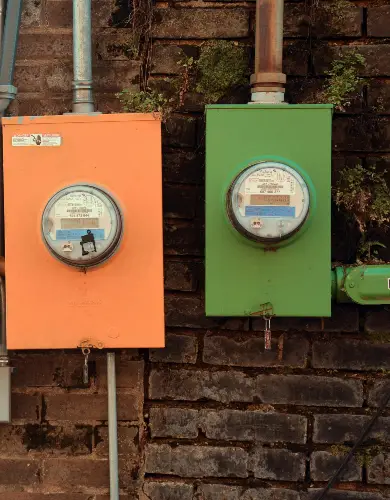What does Elexon do?
Elexon plays a vital but often unseen role in Britain’s electricity market. The National Grid is a carefully balanced system in which thousands of generators and millions of consumers are producing and using electricity simultaneously.
At the centre of this system, the not-for-profit company Elexon ensures that the contractual commitments made by generators to supply power, and by suppliers to purchase it, are accurately fulfilled and settled.
Each year, Elexon processes over four million energy contracts, providing the financial and operational stability on which the entire market depends.
This guide provides a complete answer to the question “What does Elexon do?”. Here’s what we cover:
- Who is Elexon?
- Processing of settlement imbalances
- Managing the Balancing and Settlement Code
- How is Elexon funded?
- Who owns Elexon?
- Elexon’s role in the energy reform and decarbonisation
Who is Elexon?
Elexon is an independent, not-for-profit company at the heart of Britain’s electricity market. It was established in 2001 and appointed as the electricity market administrator, tasked with designing the operating rules for the market and settling the imbalances of market participants.
Elexon is a neutral operator with no commercial stake in generation, supply, or trading.
Based in Euston, London, Elexon employs approximately 250 people, including specialists in energy settlement, market design, IT systems, and programme delivery.
Processing of settlement imbalances
Elexon plays a vital role in the settlement of system imbalances on the electricity grid.
Imbalances are a unique feature of deregulated power grids, where multiple private generators, traders, and suppliers are all trading on one continuous system.
This section explains why settlement imbalances occur and how Elexon manages them.
How settlement imbalances occur
Most trading on the wholesale electricity market takes place in advance between generators that sell power and suppliers that buy power on behalf of their customers.
In simple terms, a trade defines how much power, in kWh, will be fed onto the grid by the generator and consumed by the supplier’s customers during a specific 30-minute period.
These trades are all based on forecasts. For example, in the case of a wind farm selling electricity, it is necessary to estimate wind conditions in the 30-minute delivery period. Similarly, an energy supplier must estimate how much power its customers will consume.
A settlement imbalance is the difference between:
- The power in kWh that a party was contracted to feed into or receive from the grid; and
- The actual power the party fed into or received from the grid.
Settling these imbalances is essential to ensure that generators and suppliers are fairly compensated based on what actually happens on the grid.
How Elexon settles imbalances
Elexon plays the role of settling imbalances by paying:
- Generators who over-delivered, and
- Suppliers whose customers under-consumed.
And charging, at the same price per kWh:
- Generators who under-delivered; and
- Suppliers whose customers over-consumed.
Elexon settles imbalances by comparing the contracts traded between parties with the actual generated and consumed volumes, based on meter readings.
Given the reliance of the energy industry on manual meter readings, the process requires enough time to allow readings to be collected and to estimate consumption where precise data is not available.
Currently, the process for settling an individual 30-minute settlement period takes 14 months. For example, the settlement of transactions that occurred between 09:00 and 09:30 on 3 September 2025 will be finalised by Elexon on 3 November 2026.
Managing the Balancing and Settlement Code
The Balancing and Settlement Code is the legal framework that governs how transactions between generators and suppliers are carried out on the wholesale electricity market.
It is a legal document of more than 1,000 pages that underpins the functioning of the market.
Elexon administers a continuous change process through which licensed participants can propose modifications. Elexon facilitates expert groups and consultations to determine whether these changes should be accepted or rejected.
How is Elexon funded?
Elexon is a not-for-profit company whose activities are funded by participants in the energy market.
The Balancing and Settlement Code sets out the mechanism by which Elexon recovers its costs through charges to market participants. The majority of Elexon’s charges are split 50:50 between producers and consumers.
Elexon calculates its charges so that the company breaks even each year. That is, it makes neither a profit nor a loss. In its latest financial filings, for the year to March 2025, Elexon recovered a total of £122 million from market participants.
Here’s how each portion of Elexon’s charges is calculated:
Production share
Approximately 50% of Elexon’s ongoing costs are recovered from generators, with the main contributors being gas fired power stations, wind and solar farms, and nuclear power stations.
Each generator pays its share of Elexon’s costs in proportion to how much power it generates compared with the total power fed into the grid.
Consumption share
Fifty per cent of Elexon’s costs are recovered from licensed energy suppliers in the retail electricity market.
Each domestic and business energy supplier is charged according to its customers’ proportion of total consumption compared with overall market consumption.
These charges are incorporated into domestic and business electricity prices by each supplier.
Who owns Elexon?
Up until 2024, Elexon was directly owned by the National Grid operator NESO, a subsidiary of National Grid Plc.
However, on 1 October 2024, the ownership structure of Elexon changed to a federated model, under which the 13 biggest funding contributors to Elexon were each given a one-thirteenth share in the company.
According to the latest Companies House filings, the owners are as follows:
- Ovo Electricity Limited
- Octopus Energy
- Drax Power Limited
- TotalEnergies Gas and Power Limited
- Scottish Power
- Drax Energy Solutions
- Uniper UK Limited
- Orsted ESS Mersey Limited
- SSE Energy Supply Limited
- RWE Generation UK Plc
- British Gas Trading Limited
- E.ON UK Energy Markets Limited
- EDF Energy Customers Limited
The transition of Elexon’s ownership was enabled by the UK government’s Energy Act 2023, which strengthened Elexon’s role as an independent and neutral market administrator.
Since each shareholder owns less than 10% of Elexon, their individual influence on its operations is strictly limited.
Elexon’s role in the energy reform and decarbonisation
Britain’s energy industry is undergoing rapid change as it works towards its ambitious goal of a decarbonised national grid by 2030.
Since Elexon operates the trading and settlement system for the electricity sector, it is playing a vital role in delivering necessary reforms to the market.
Below, we highlight Elexon’s role in four major reforms that are supporting the decarbonisation of the grid.
Flexibility services
In a future decarbonised grid, power generation will be dominated by intermittent renewables, whose output must be balanced by flexible consumer demand that adapts to the availability of electricity.
The grid operator NESO is introducing grid flexibility services, through which households and businesses can receive financial rewards for reducing power consumption during periods of grid stress.
Elexon is responsible for introducing Flexibility Market Rules that govern these incentive schemes, as well as for providing the metering and settlement data that underpin their operation.
💡 Find out more about the demand flexibility service, where companies can earn revenue by reducing their business energy consumption on demand.
Market-wide half-hourly settlement
Elexon is the programme manager of the Market-wide Half-hourly Settlement (MHHS) reform and is responsible for overseeing around 180 organisations involved in its implementation.
Under the reform, all domestic and business electricity meters in Britain will automatically record and transmit energy meter readings every 30 minutes, reflecting the way half-hourly electricity meters currently operate.
The reform aims to use automated meter readings to significantly shorten the 14-month settlement period currently applied under the Balancing and Settlement Code.
Find out more in our full guide to the Market-wide Half-hourly Settlement reform.
Contracts for Difference scheme
The Contracts for Difference scheme is the main government mechanism for incentivising the development of large-scale renewable energy generation projects.
Under the scheme, developers receive a guaranteed fixed price for each MWh of electricity they generate, with the government providing a top-up for the difference between the guaranteed price and the market price.
Elexon acts as the settlement provider for the scheme, calculating the necessary payments on behalf of the government.
Capacity Market
The Capacity Market is the UK government’s main mechanism for ensuring that back-up electricity generation capacity is available during periods of peak grid stress.
The scheme provides payments to generators, such as Drax Power Station, that guarantee they will be available as back-up when demand is high but renewable generation is low.
Similar to its role in CfDs, Elexon manages the settlement process under the scheme, calculating the payments due to participating generators.

